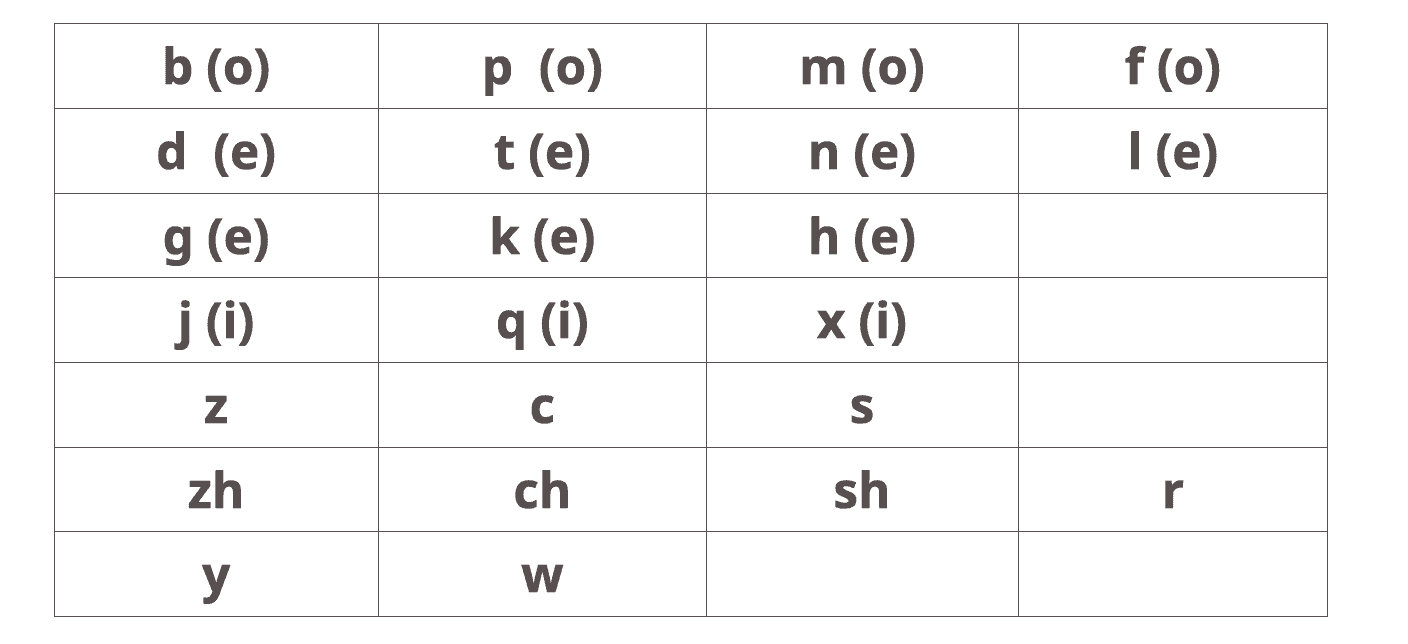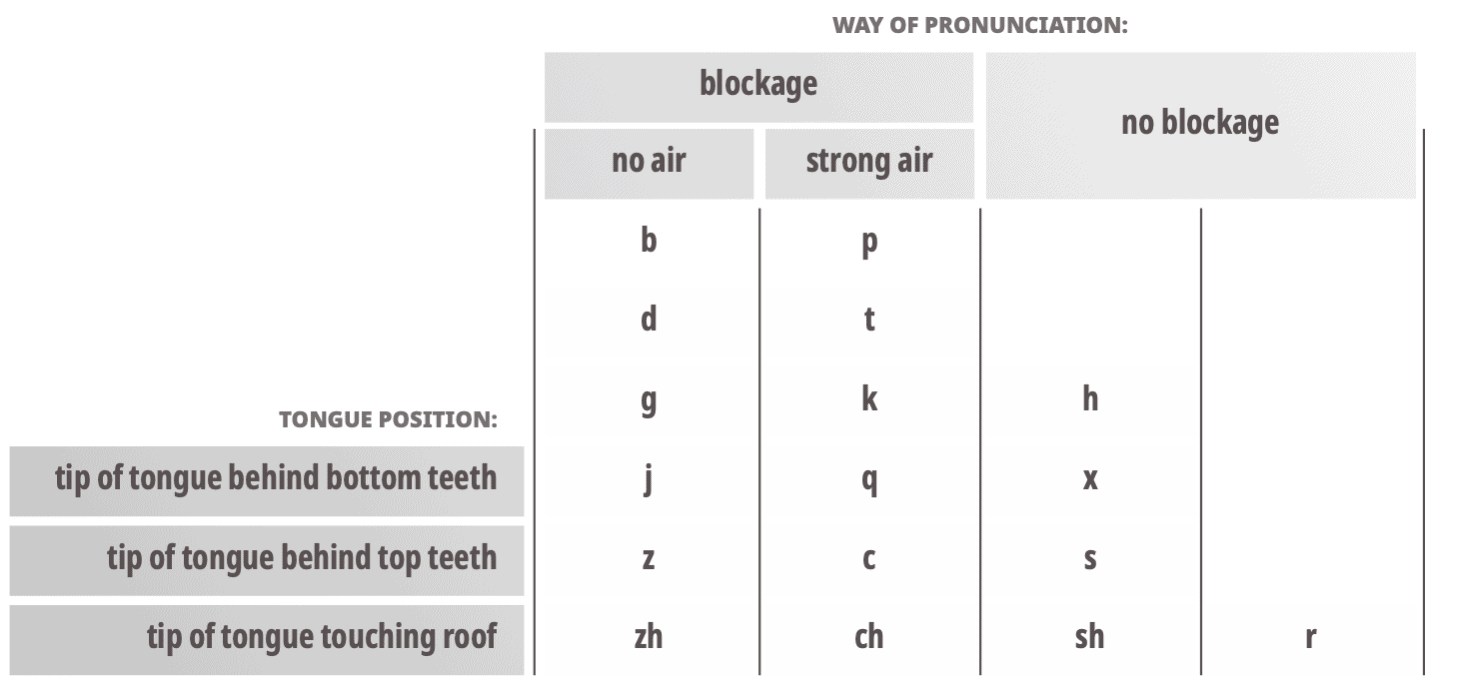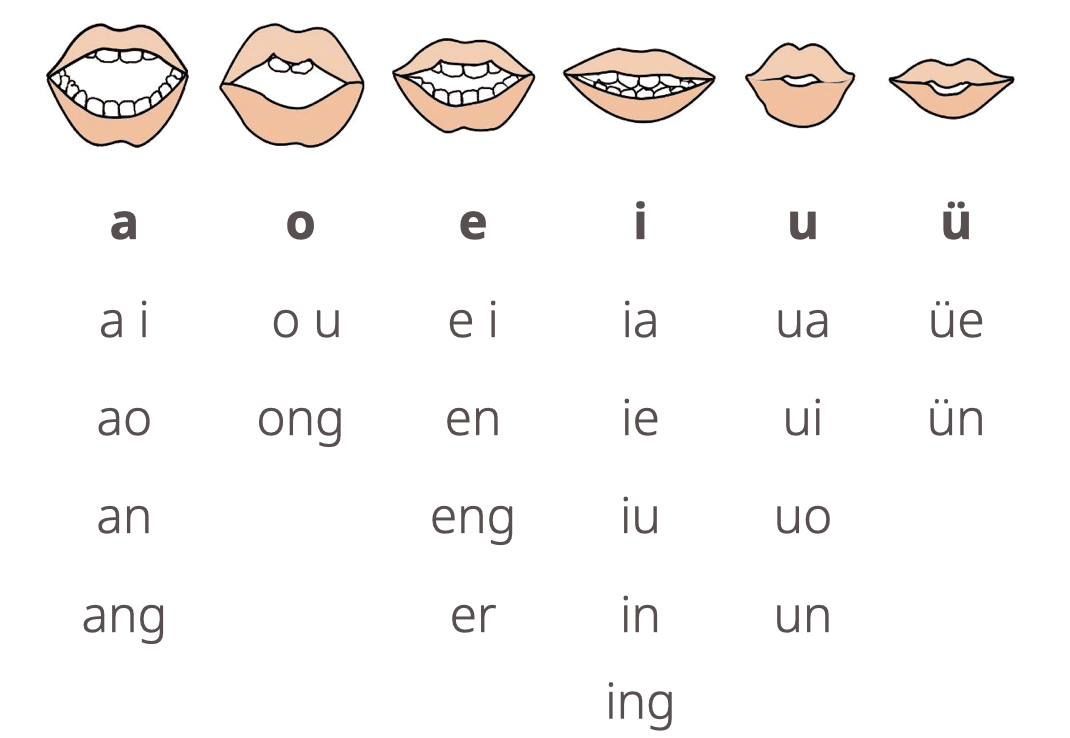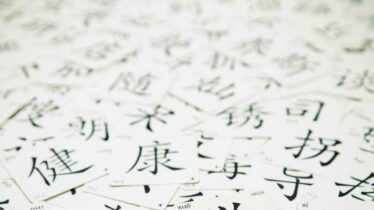Chinese initials, finals & accents
All you need to know to pronounce like a pro. Here’s GoEast Mandarin taking you through the Chinese language pronunciation: Initials, finals & accents, and even some tongue-twisters at the end. Scroll down for the video.
Chinese language accents
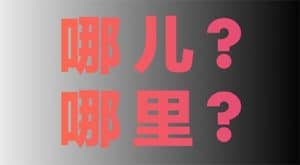
In Chinese language there are also accents. The most important ones are the northern and southern. 哪儿 (north China) and 哪里 (south China). Sometimes in Beijing, the local people cannot understand you without 儿. In the south, people can usually understand the northern accent, but they themselves use 哪里.
Some other local dialects are notoriously hard to understand. Close to Shanghai, for instance, Sūzhōu-huà is difficult to pick up for Mandarin learners (as is Shànghǎi-huà).
Read here about the alphabet of the Chinese language
Initials in Chinese
We have 21 initials in the Chinese language. Some people say we have 23 initials, because they also count i and ou, but they are actually finals. The initials of Chinese are:
Here’s a useful guide on how to pronounce these initials. The first two columns there’s blockage of air or no blockage (aspirated versus unaspirated). You can use a tissue (as shown in the video) to test yourself: if it moves for the blockage column, your Chinese pronunciation is right!
Chinese finals
The 6 basic ones are a o e i u ü, and from that we can make more finals. It’s also very important to remember this order. Because when we mark the tone above the letter, we follow this order. First a, then o, then e, then i, then u, and lastly ü. Here we have also the mouth position for each other of each final:
Pronouncing finals & initials
In this article about the pronunciation of the Chinese pinyin alphabet, we have similar pronunciations from the English language, to help you correctly speak out the Chinese finals and initials.
Chinese language tones
Read about the four tones of the Chinese language here.
Difficult to pronounce Chinese words
Among the most difficult to pronounce Chinese words is “出租车 Chūzū chē” (Taxi). Even Chinese people will sometimes pronounce this unclearly! Very difficult for many foreign Chinese language learners is “自行车 Zìxíngchē” (Bicycle), or even “出去 Chūqù” (Go out).

